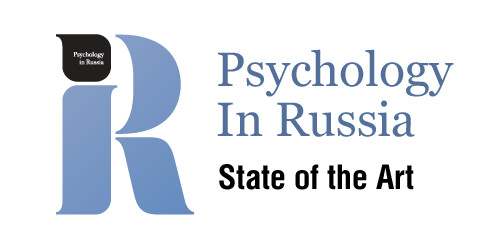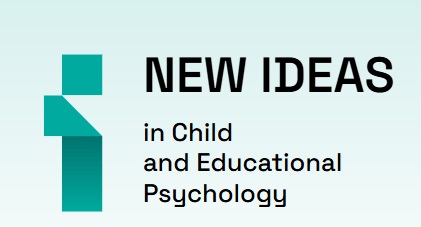Experimental Studies of Art Perception
-
-
Background. An analysis of foreign literature covering the models of aesthetic experience (AE) revealed a number of limitations: the absence of nonlinear dynamics, multi-level processes and integration of personality traits; to overcome these limitations, we developed a System-Dynamic Model of AE (SDM-AE).
Objective. The aim is to conduct an empirical verification of the predictions of the SDM-AE, based on the material of new media art and non-academic erotic paintings.
Study Participants. The study involved 750 respondents aged from 16 to 38 years (MAge = 23.86; SD = 6.53), about 84% of them are women — students of Stroganov's University, Moscow Institute of Psychoanalysis and school students from Moscow.
Methods. The study engaged the structural equation modeling, as well as psychodiagnostics tools to measure the following constructs: aesthetic emotions, aesthetic judgments, art interest, aesthetic experience, engagement with beauty, attitudes towards technology, implicit theories of creativity and attitudes towards sex. Linear regression and mediation analyses were used to process the data.
Results. The mediation analysis showed that aesthetic judgments are mediating variables between attitudes towards sex, attitudes towards technology and aesthetic emotions, the integration of flow dispositions into SDM-AE is shown. Universal personal variables that are actualized regardless of the content of the material are revealed. It is shown that the AE of new media art directly predicts a positive attitude towards technology, aesthetic responsiveness and contributes to the development of implicit theories of creativity.
Conclusions. Empirical verification of the SDM-EO allows us to conclude that the model is valid, and the results obtained contribute to the development of Russian psychology of art.
Keywords: aesthetic experience; aesthetic emotions; aesthetic judgments; implicit theories of creativity; dispositional flow; sexual attitudes; attitude to technology; new media; youth DOI: 10.11621/LPJ-25-33
-
-
-
Background. The involvement of the motor component in the perception of musical intonation is emphasised by leading researchers in this field of music psychology and musicology. However, these theoretical positions require empirical research and confirmation.
Objective. The aim of the study was to hypothesise the role of motor similarity in the formation of musical perception. It is presupposed that the emotional and personal involvement of the listener is increased due to the motor experience of music.
Study Participants. Seventy-six people took part in the study (10 men and 66 women with an average age of 30). 35 participants were involved in the main group and the other 41 respondents constituted the control group.
Methods. A between-groups comparison design was used: the control group listened to a lecture or conference papers on psychological topics between the first and second music listening sessions, while the core group participated in a musical movement masterclass. Participants in the experimental group were asked to respond to the music with a movement. Free descriptions were used and qualitatively evaluated by experts according to categories.
Results. The effect of the inter-factorial interaction (group factor and number of listening sessions) on the categories of emotional and personal involvement and perception of intonational development in music is shown. Pairwise comparisons of each participant's descriptions revealed that the main group had significantly more changes related to the change in perceptual position (from external to internal), the manner in which the music was described, and the transformation of the visual image were significantly more frequent in the main group.
Conclusions. The perception of music in improvisation with motor imitation is characterised by a greater emotional and personal involvement: the listener's attitude to music changes, as does their connection with and personal significance of the music they experience. The role of motor likeness in enabling the perception of intonational development in music is demonstrated. When participants who listened to music without movement listened to it again, the changes in their descriptions were mainly related to the transformation of visual images.
Keywords: music perception; musical experience; motor imitation; emotional and personal involvement; musical movement; aesthetic education DOI: 10.11621/LPJ-25-31
-
-
-
Background. The shortage of research on children's perception of cartoons at preschool age defines the special relevance of the work.
Objective. The work is aimed at identifying the peculiarities of preschoolers' perception and understanding of the main cartoon characters: the content of their thoughts, emotional states, motives for actions. The research focuses on the analysis of the phenomena of dynamics of meaning formation in the attitude of children to the main characters in the context of events of the film narrative.
Study Participants. The study involved 60 children aged 5 to 7 years (from 60 months to 86 months; Mage = 72.3; SD=7.63): 30 boys (from 60 months to 86 months; Mage = 73.3; SD = 7.94) and 30 girls (from 62 months to 86 months; Mage = 71.3; SD = 7.31), attending kindergartens.
Methods. Half-structured interview with open-ended questions was applied. The cartoon "The Old Toy" directed by V. Samsonov (1971, running time: 9:42) was used as the research material. The script was written by V. Livanov.
Results. 1. By modeling the content of the character's thoughts in different scenes of the cartoon, children rely on his reflections on his physical disabilities; on the subsequent line of the character's behaviour within the framework of the film's plot; on the nature of the conflict with another character; on the content of the character's reflection on his experiences, on the moral and ethical aspects of behaviour. 2. Preschoolers' assessment of the character's emotional state in a conflict situation includes a wide range of the character's feelings: empathy, rejection, jealousy. 3. Preschoolers' explanation of motives of the character's actions is based either on objective reasons (it started raining, it got dark) or on subjective motivations: character's goals, his emotional states, attitude towards another character, reaction to actions and states of another character. 4. A number of phenomena related to the dynamics of meaning-formation processes in children's perception of cartoons have been identified: "lasting affect" (transferring the content of experiences from one episode of the film to another); "anticipatory experience" (emotional prediction of film events), "emotional release" (cathartic experience of opposite emotional tendencies).
Conclusions. A complex multilevel semantic structure of understanding cartoon characters including their thoughts, experiences, and motives for actions has been revealed. A number of phenomena of semantic formation in the process of children's cartoons perception are characterized, which make it possible to clarify the structural features of film storytelling and the functions of artistic techniques oriented at the emergence of a cathartic experience in a child.
Keywords: preschool age; understanding; cartoon; character; action; motive; experience; reflection; meaning-making; perception; child DOI: 10.11621/LPJ-25-30
-









